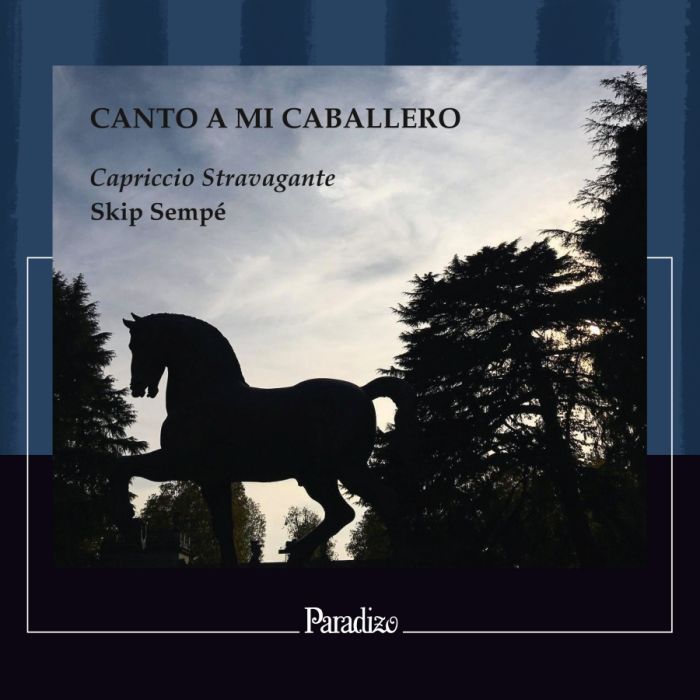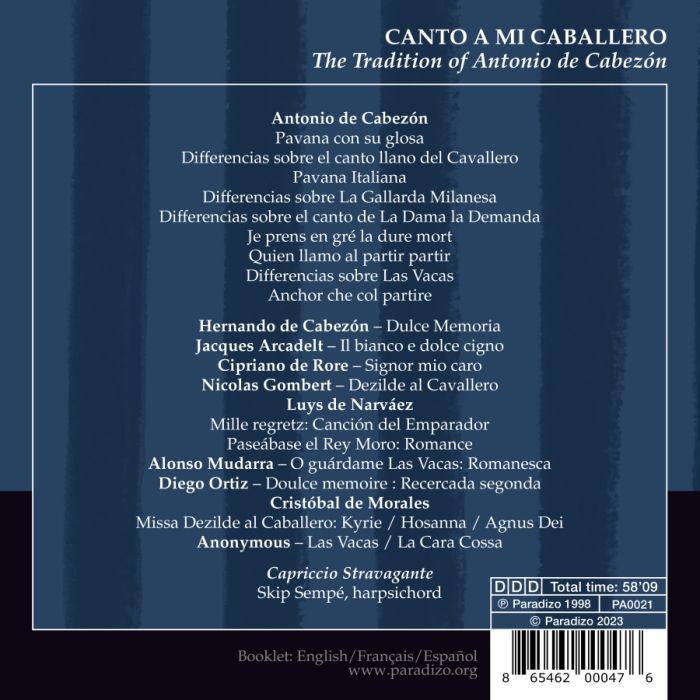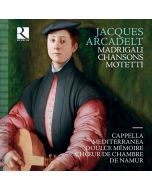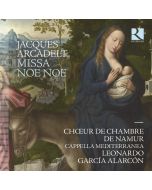
(Produkt nie został jeszcze oceniony)
kompozytor
różni kompozytorzy
tytuł
Canto a mi Caballero
pełny spis kompozytorów
Arcadelt, Jacques, Cabezon, Antonio de, Cabezon, Hernando de, Gombert, Nicolas, Morales, Cristobal de, Mudarra, Alonso, Narvaez, Luys de, Ortiz, Diego, Rore, Cipriano de, różni kompozytorzy
wykonawcy
Capriccio Stravagante, Sempé, Skip
nr katalogowy
PA 0021
opis
Canto a mi Caballero is a celebration of instrumental virtuosity at the height of Renaissance humanism. As Franco-Flemish polyphony and the Italian madrigal spread their influence throughout Europe, the most brilliant Spanish musicians (among them the legendary harpsichordist, harpist and organist Antonio de Cabezón, Morales, Mudarra and Narvaez) were inspired by their foreign contemporaries, as well as by the expression of native Spanish melody such as the mystical ‘Canto de Caballero’. This program presents the Caballero melody in various secular and sacred versions, entwined with some of the most famous music and poetic texts of their time. Canto a mi Caballero retraces that special moment in Renaissance music in which the humanist tendency in instrumental music first attains its singular goal: expressivity that rivals that of the human voice.
•Arcadelt: Il Bianco e Dolce Cigno
•Cabezón, A: Anchor que col partire
•Cabezón, A: Diferencias sobre ‘La dame le demanda’
•Cabezón, A: Diferencias sobre canto del Cavallero
•Cabezón, A: Diferencias sobre la Gallarda Milanesa
•Cabezón, A: Diferencias sobre las vacas
•Cabezón, A: Je prens en gre la dure mort
•Cabezón, A: Pavana con su glosa
•Cabezón, A: Pavana italiana
•Cabezón, A: Quien llamo al partir partir
•Cabezón, H: Dulce memoriae
•Gombert: Dezilde al Cavallero
•Morales, C: Missa Desilde al cavallero
•Mudarra: Romanesca No. 1 'O guárdame Las Vacas'
•Narvaez: Canción del Emperador (sobre "Mille Regretz" de Josquin des Prez)
•Narvaez: Paseabase el Rey moro
•Ortiz, D: Ricercada sobre Doulce memoire
•Rore: Signor mio caro
Capriccio Stravagante's instrumentation, featuring the consort of viols and plucked strings (guitars, harp, vihuela, along with Skip Sempé's solo harpsichord selections), provide for a touching portrayal of the classic Spanish concept of the ‘Duende’.
Works:
•anon.: Las vacas
•Arcadelt: Il Bianco e Dolce Cigno
•Cabezón, A: Anchor que col partire
•Cabezón, A: Diferencias sobre ‘La dame le demanda’
•Cabezón, A: Diferencias sobre canto del Cavallero
•Cabezón, A: Diferencias sobre la Gallarda Milanesa
•Cabezón, A: Diferencias sobre las vacas
•Cabezón, A: Je prens en gre la dure mort
•Cabezón, A: Pavana con su glosa
•Cabezón, A: Pavana italiana
•Cabezón, A: Quien llamo al partir partir
•Cabezón, H: Dulce memoriae
•Gombert: Dezilde al Cavallero
•Morales, C: Missa Desilde al cavallero
•Mudarra: Romanesca No. 1 'O guárdame Las Vacas'
•Narvaez: Canción del Emperador (sobre "Mille Regretz" de Josquin des Prez)
•Narvaez: Paseabase el Rey moro
•Ortiz, D: Ricercada sobre Doulce memoire
•Rore: Signor mio caro
nośnik
CD x 1
wydawca
Paradizo
data wydania
1.09.2023
EAN / kod kreskowy
865462000476
79,00 zł
Produkt dostępny.
Wysyłka w ciągu 3 dni roboczych
Darmowa wysyłka dla zamówień powyżej 300 zł!
Darmowy kurier dla zamówień powyżej 500 zł!
sprawdź koszty wysyłki

